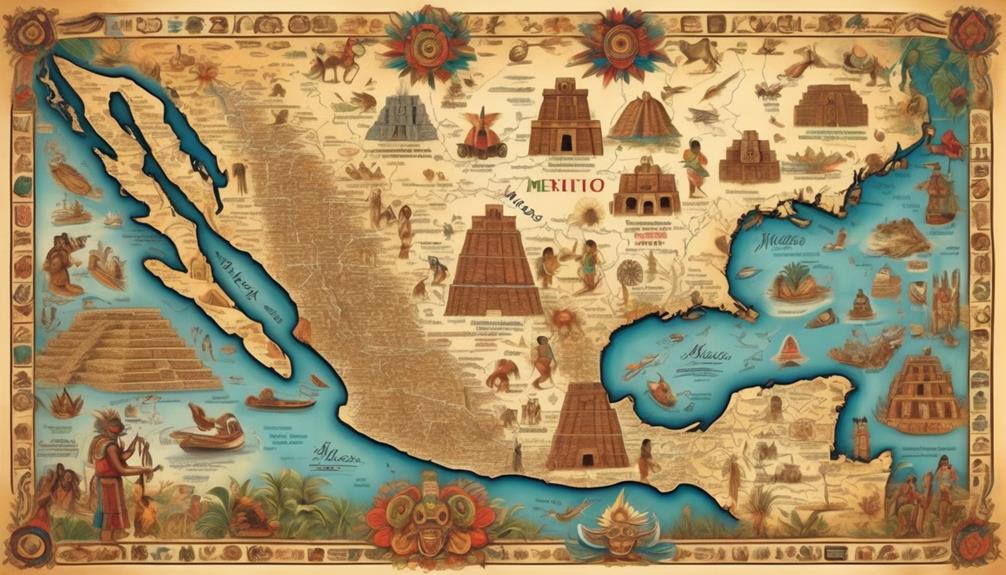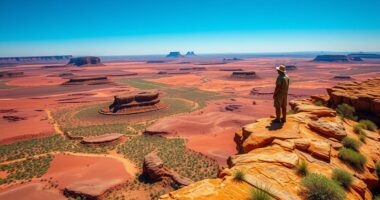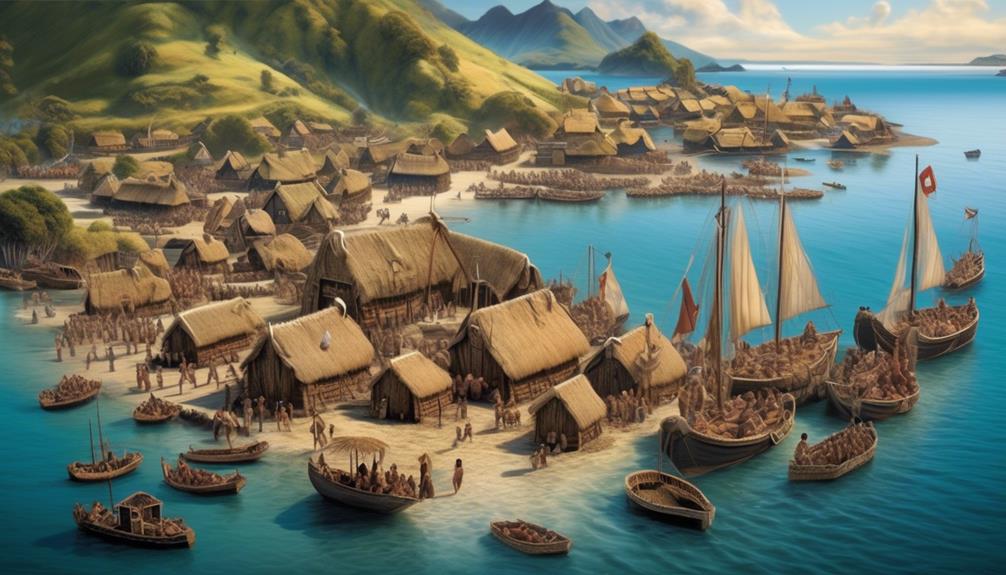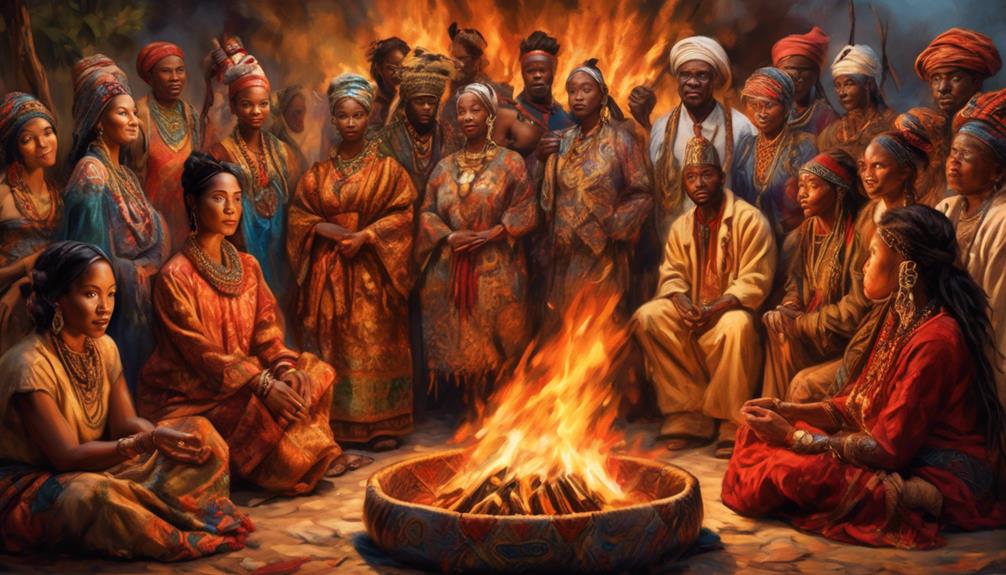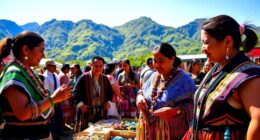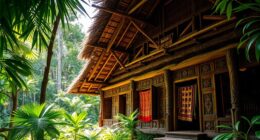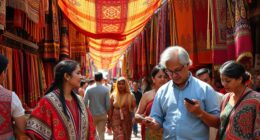Did you know that in addition to the mighty Aztecs, Mexico was also home to a diverse range of indigenous tribes?
From the enigmatic Olmecs to the innovative Zapotecs, the history of Mexico is rich with the legacy of these ancient civilizations.
But who were these tribes, and what were their contributions to the tapestry of Mexican culture and history?
Join us as we explore the fascinating world of Mexico's indigenous tribes and uncover the hidden gems of their legacies.
Key Takeaways
- The Olmecs were one of the indigenous tribes that lived in Mexico, thriving from 1400 BCE to 400 BCE.
- The Aztecs were another indigenous tribe that constructed the magnificent city of Tenochtitlan.
- The Mayans were masters of astronomy and mathematics and constructed astronomically aligned pyramids like Chichen Itza and Tikal.
- The Zapotecs were builders of Monte Albán and had advanced understanding of mathematics, astronomy, and engineering.
The Olmecs: Mexico's Mother Culture
The Olmecs, known as Mexico's Mother Culture, were an ancient civilization that significantly influenced the development of Mesoamerican societies. Their civilization, which thrived from 1400 BCE to 400 BCE, laid the foundation for many aspects of Mesoamerican culture, including art, architecture, trade, and religion. The Olmecs are renowned for their colossal stone heads, intricate jade artifacts, and unique architecture, all of which reflected their advanced artistic abilities and cultural sophistication.
In terms of architecture, the Olmecs constructed impressive ceremonial centers, such as La Venta and San Lorenzo, which showcased their architectural prowess and served as religious and political hubs. Their trade networks extended across Mesoamerica, enabling the exchange of goods, ideas, and cultural practices. This facilitated the spread of Olmec religious beliefs, which were centered around deities like the were-jaguar, a prominent supernatural entity in their cosmology.
The Olmec civilization's religious practices and beliefs were integral to their society, influencing their art, architecture, and trade networks. Understanding the Olmecs provides valuable insights into the cultural and religious foundations of Mesoamerican civilizations that followed.
The Aztecs: Builders of Tenochtitlan
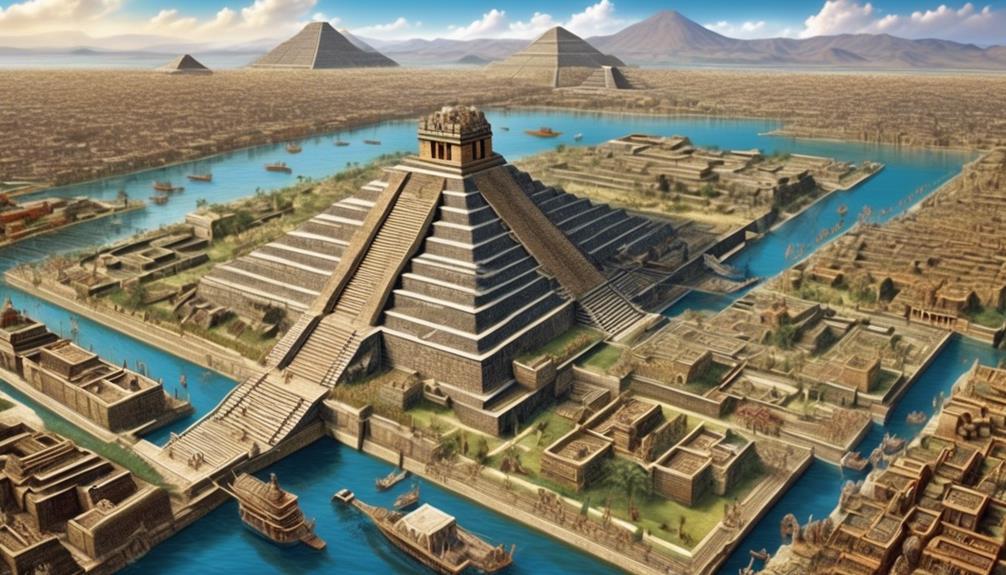
Builders of a new era in Mesoamerican history, the Aztecs, like the Olmecs before them, left an indelible mark on the cultural landscape of Mexico through the construction of their magnificent city, Tenochtitlan. Aztec architecture and city planning were truly remarkable, showcasing their advanced engineering and urban design. The city was built on an island in Lake Texcoco, and the Aztecs ingeniously created a system of artificial islands, called chinampas, to support agriculture and sustain their growing population. This innovative approach to urban development allowed Tenochtitlan to become one of the largest and most sophisticated cities in the world at that time.
Tenochtitlan's significance and historical impact can't be overstated. The city served as the capital of the Aztec Empire, a thriving hub of culture, commerce, and political power. Its grandeur and beauty captivated the Spanish conquistadors upon their arrival. Sadly, the city was later destroyed by the Spanish, who built Mexico City over its ruins.
However, the legacy of Tenochtitlan continues to inspire awe and admiration, as it represents a pinnacle of pre-Columbian civilization and a testament to the ingenuity of the Aztec people.
The Mayans: Masters of Astronomy and Mathematics
Masters of astronomy and mathematics, Mayans made significant contributions to the understanding of celestial bodies and numerical systems, shaping their culture and society in profound ways. The Mayans exhibited a deep understanding of astronomy and mathematics, evident in their architectural wonders and calendar mysteries.
- Mayan Architectural Wonders
- The Mayans constructed awe-inspiring architectural marvels such as the pyramids of Chichen Itza and Tikal, which were astronomically aligned. These structures served as observatories, aiding the Mayans in tracking celestial movements with remarkable precision.
- The Mayans integrated their astronomical knowledge into their architecture, creating buildings and temples that aligned with the movements of the sun, moon, and planets. This integration showcased their advanced understanding of celestial phenomena and its significance in their daily lives.
- Mayan Calendar Mysteries
- The Mayans developed complex calendar systems, including the Long Count calendar, which accurately calculated long periods of time. This intricate calendar system demonstrates their mathematical prowess and astronomical knowledge, as it accurately predicted celestial events such as solstices and equinoxes.
- Their calendars were crucial for agricultural planning, religious ceremonies, and societal organization, reflecting the Mayans' deep connection between astronomy, mathematics, and the fabric of their society.
The Zapotecs: Builders of Monte Albán
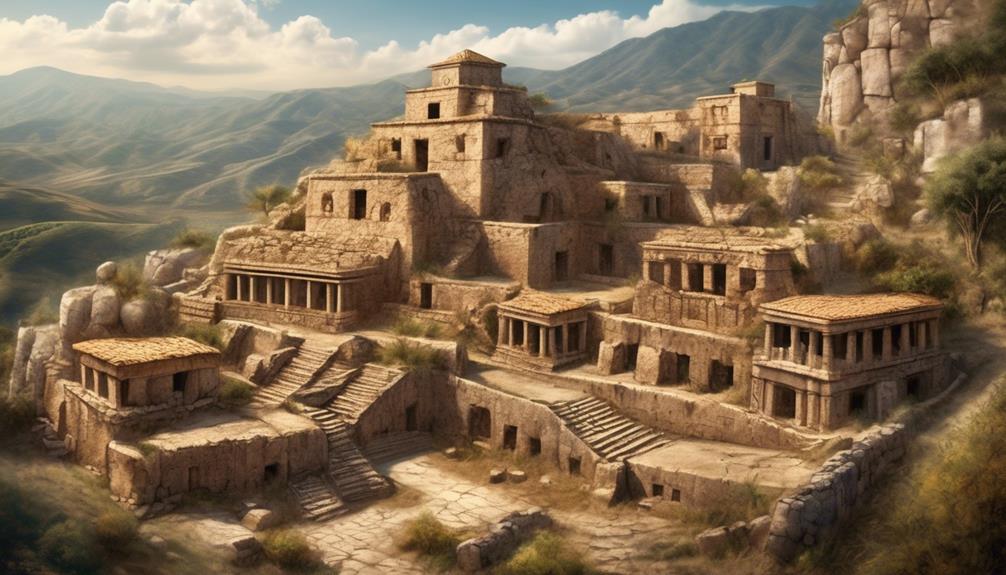
In the heart of the Oaxaca Valley, the ancient Zapotecs established the extraordinary city of Monte Albán, showcasing their architectural and cultural ingenuity. The Zapotecs were adept at constructing impressive buildings and urban planning, with their architectural prowess evident in the layout and design of Monte Albán. The city's structures, including temples, palaces, and observatories, reflect the Zapotec's advanced understanding of mathematics, astronomy, and engineering.
| Zapotec Architecture | Monte Albán Excavation Techniques |
|---|---|
| Intricate stone carvings and reliefs | Use of manual labor and basic tools for excavation |
| Complex geometric designs in buildings | Strategic location selection for structures |
| Advanced knowledge of acoustics and sound | Preservation of artifacts through careful digging techniques |
The excavation techniques used in uncovering Monte Albán have revealed the meticulous planning and construction methods employed by the Zapotecs, providing valuable insights into their architectural achievements and cultural practices. Through the study of Zapotec architecture and Monte Albán excavation techniques, we gain a deeper understanding of the sophistication and innovation of this ancient Mesoamerican civilization.
The Mixtecs: Masters of Metalworking and Artistry
The Mixtecs skillfully honed their expertise in metalworking and artistry, showcasing a remarkable mastery of intricate craftsmanship and innovative techniques. Our exploration of Mixtec craftsmanship reveals the depth of their metalworking techniques and the impact of their artistic prowess.
- Innovative Metalworking Techniques
- The Mixtecs were known for their exceptional skills in crafting intricate jewelry and ornaments using gold, copper, and other metals. Their advanced knowledge of metallurgy allowed them to create elaborate filigree work, demonstrating a high level of precision and artistry.
- They employed sophisticated casting methods to produce ceremonial bells, masks, and figurines, showcasing their mastery of metalworking techniques. The use of lost-wax casting, in particular, enabled them to create detailed and finely crafted metal objects, reflecting their advanced technological capabilities.
The Mixtecs' dedication to mastering metalworking and artistry not only shaped their cultural identity but also left an enduring legacy that continues to inspire admiration and awe. Their innovative techniques and intricate craftsmanship set them apart as true masters of metalworking in the ancient world.
Frequently Asked Questions
What Were the Main Forms of Government and Social Organization Among the Indigenous Tribes of Mexico?
We'll delve into the main forms of government and social organization among the indigenous tribes of Mexico.
Various tribes had distinct governing systems, ranging from monarchies to council-based structures. These societies were stratified, with clear hierarchies dictating roles and responsibilities.
Cultural practices, economic systems, and religious rituals were intertwined with the governance, shaping trade relations and artistic achievements.
The historical significance of these lesser-known tribes is vital in understanding Mexico's rich heritage.
How Did the Indigenous Tribes of Mexico Interact With One Another and With Other Cultures Outside of Mexico?
Inter-tribal relations among the indigenous tribes of Mexico were intricate and dynamic. Cultural exchange, external influences, and trade networks played significant roles in shaping interactions.
Through strategic alliances and shared traditions, tribes cultivated diplomatic ties while also engaging in economic and cultural exchanges. This fostered a rich tapestry of interconnectedness, contributing to the diverse and complex mosaic of indigenous societies in Mexico.
What Were the Main Religious Beliefs and Practices of the Indigenous Tribes of Mexico?
The religious practices of the indigenous tribes of Mexico were deeply influenced by cultural traditions and social structures. They encompassed a diverse range of beliefs and rituals, reflecting the complex governance systems of these societies.
The spiritual customs were often intertwined with daily life, shaping everything from agriculture to social hierarchies. The intricate tapestry of indigenous religious practices in Mexico provides profound insights into the rich and dynamic history of these ancient civilizations.
What Were the Major Contributions of the Indigenous Tribes of Mexico to Art, Architecture, and Other Cultural Achievements?
We've extensively examined the major contributions of the indigenous tribes of Mexico to art, architecture, and other cultural achievements.
Their artistic expressions, such as intricate murals and impressive sculptures, showcased their advanced skills and creativity.
Additionally, their architectural marvels, including impressive pyramids and complex city layouts, demonstrated their engineering and urban planning expertise.
What Are Some of the Lesser-Known Indigenous Tribes of Mexico and What Is Their Significance in Mexico's History and Culture?
We should delve into the lesser-known indigenous tribes of Mexico to uncover their cultural significance.
These tribes have contributed in unique ways to Mexico's history and culture.
Understanding their impact sheds light on the diverse tapestry of indigenous heritage in Mexico, enriching our appreciation of the country's cultural mosaic.
Conclusion
In conclusion, these indigenous tribes were the backbone of Mexico's rich cultural heritage. Like a tapestry woven with diverse threads, each tribe contributed unique colors and patterns to the fabric of Mexican history.
From the Olmecs to the Mixtecs, their legacies continue to inspire and fascinate us. As we delve deeper into their achievements, we uncover the intricate layers of Mexico's past, revealing the depth and complexity of its indigenous roots.
Mary is a passionate writer who brings creativity and a fresh perspective to our team. Her words have the power to captivate and inspire, making her an essential contributor to our content. Mary’s commitment to storytelling and dedication to promoting Indigenous culture ensures that her work touches the hearts of our readers. We’re fortunate to have her as part of our team.
